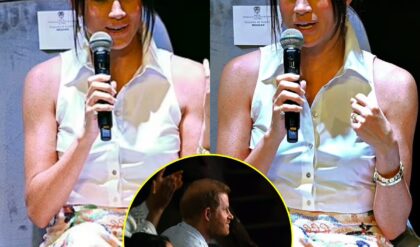Trump’s Crowd Size Deception in Florida: Another Chapter in a Long-Running Strategy

In recent developments, former President Donald Trump has been caught once again attempting to mislead the public about the size of his rally crowds. This time, the focus was on an event in Ocala, Florida. Trump posted an image on his social media platform, Truth Social, thanking Ocala and showing a large crowd, claiming it was for one of his rallies. However, a closer look revealed a different story.
The Real Event: A Concert, Not a Rally
The image Trump shared was actually from a concert called “Rock the Country” held at Majestic Oaks in Ocala. The event featured performances by Kid Rock, Jason Aldean, Lynyrd Skynyrd, Brantley Gilbert, Travis Tritt, and other country music stars. It was a two-day concert that had nothing to do with Trump or any political rally. The image included Congresswoman Kat Cammack and the Sheriff of Marion County, both notable figures, but the crowd was there for the music, not for Trump.
The Propaganda Machine at Work
Right-wing propaganda accounts quickly jumped on the image, amplifying Trump’s false narrative. Accounts like Wall Street Apes, heavily promoted by Elon Musk’s algorithm on Twitter (now X), posted the image with captions that exaggerated the crowd’s size and support for Trump. They claimed it was a massive turnout for Trump, with some accounts even suggesting absurd numbers like 500,000 attendees. This misinformation was spread widely among MAGA supporters, creating a false perception of overwhelming support.
A Pattern of Misrepresentation
This incident is not isolated. Trump has a history of inflating crowd sizes and misrepresenting events to create a narrative of widespread support. From falsely claiming massive crowds at rallies to manipulating images and videos, Trump’s strategy has consistently involved deception.
- Yankee Stadium Incident: Trump previously shared a manipulated image showing a banner with his mugshot at Yankee Stadium. It was later revealed that the person behind the banner had a history of staging such stunts and selling Trump merchandise for profit. The reality was that the banner did not represent genuine support.
Charlotte Raceway: During a visit to Charlotte Raceway, Trump waved at a crowd that was not even present. The video was edited to make it appear as if he was being greeted by enthusiastic supporters, but the truth was far from it.
Wildwood, New Jersey: Trump claimed that 100,000 people attended his rally in Wildwood, despite the venue having a capacity of only 20,000 and being less than half full. Media outlets initially ran with the inflated numbers before correcting the misinformation.
Media Manipulation: A Core Tactic
Trump’s strategy relies heavily on manipulating media coverage. By focusing on crowd sizes and selective polling data, his team attempts to create a perception of dominance and inevitability. This approach diverts attention from substantive issues and achievements, such as economic performance, healthcare improvements, and veterans’ benefits under the Biden administration.
For example, despite record job creation, falling gas prices, and healthcare cost reductions under President Biden, Trump’s narrative focuses on manufactured visuals of support. This is part of a broader strategy described as the “strongman weak man” paradigm, where Trump portrays himself as a dominant figure supported by massive crowds, regardless of the reality.
The Role of Right-Wing Media
Right-wing media outlets play a crucial role in perpetuating this narrative. By selectively editing footage of President Biden to make him appear frail or out of touch, they create a contrast that favors Trump. These outlets often ignore Biden’s accomplishments and focus on trivial or misleading aspects, such as his walking speed or footwear.
The Importance of Fact-Checking
The continuous cycle of misinformation highlights the importance of vigilant fact-checking and exposing false narratives. Independent platforms like the Midas Touch Network have been instrumental in debunking these myths and providing accurate information to the public. They have documented numerous instances of Trump waving to nonexistent crowds, sharing doctored images, and making baseless claims about his support base.
Conclusion
The recent incident in Ocala is yet another example of Trump’s longstanding strategy of crowd size deception. By misrepresenting events and leveraging right-wing media to amplify these falsehoods, Trump aims to maintain an illusion of widespread support. However, diligent fact-checking and exposing these tactics are crucial in ensuring the public remains informed about the truth behind these staged narratives. As the political landscape continues to evolve, staying vigilant against misinformation will be essential in preserving the integrity of public discourse.
News
(VIDEO) Celebs that P Diddy EXPLOITED for Cash
P Diddy and the Dark Side of the Entertainment Industry The entertainment industry is no stranger to scandal and controversy, but the recent revelations surrounding P Diddy (Sean Combs) have brought to light a web of disturbing allegations and connections…
(VIDEO) Kevin Hart IN TEARS After New Leaks EXPOSE Him At Diddy’s After Parties!!
Kevin Hart: A Complex Journey Through Fame, Scandal, and Personal Growth Kevin Hart, the renowned comedian and actor, has led a life marked by both incredible professional success and deeply personal scandals. His journey from selling sneakers to becoming one…
(VIDEO) “He Ruined My Life” Former Diddy Employees TEAM UP To EXPOSE Him!
The Dark Side of Fame: Allegations Against Diddy and the Revelations from Former Employees The music industry is often glamorized for its glitz and glamour, but behind the scenes, it can harbor dark secrets and troubling behavior. Recently, Sean “Diddy”…
(VIDEO) “He’s Why Justin Bieber Is DEPRESSED!” Undercover FBI Agent EXPOSES Diddy
The Tumultuous History of Snoop Dogg, P. Diddy, and the East Coast-West Coast Rivalry Hip-hop history is fraught with feuds, friendships, and ever-changing alliances. Central to many of these stories are iconic figures such as Snoop Dogg and P. Diddy…
(VIDEO) “Diddy Did Usher Dirty Forever” Snoop Dogg EXPOSES Sean Combs!
The Tumultuous History of Snoop Dogg, P. Diddy, and the East Coast-West Coast Rivalry Hip-hop history is fraught with feuds, friendships, and ever-changing alliances. Central to many of these stories are iconic figures such as Snoop Dogg and P. Diddy…
(VIDEO) Undercover CIA Agent EXPOSES Diddy & Jay Z!
The Fall of P. Diddy: A Dismantling of Credibility and the Unfolding Legal Crisis Introduction In recent years, Sean “P. Diddy” Combs has found himself at the epicenter of numerous controversies and legal battles that have significantly tarnished his once-polished…
End of content
No more pages to load











